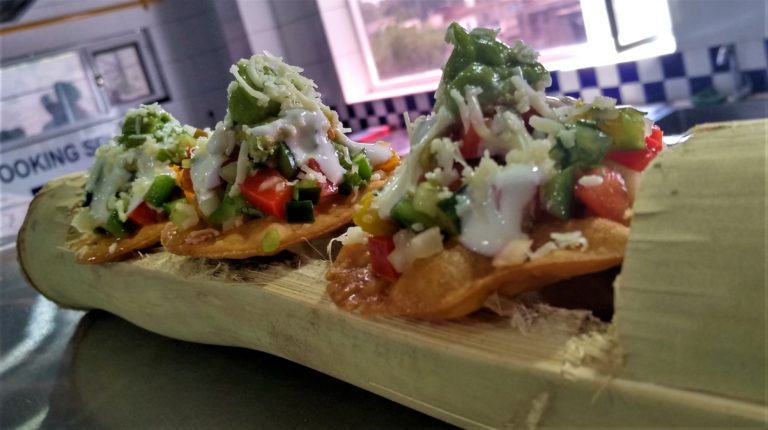“Happiness is a plate of Nacho” – Elizabeth Warren
Fiery jalapenos. Possibly a touch of guacamole to get extravagant. Chicken, beans, chili or Pico de Gallo – while all great additional items, include a hazard in over convoluting the oversimplified euphoria that is nachos, a legend that doesn’t date all that far into the past.
As indicated by Oxford English Dictionary’s Adriana P. Orr, before the 1940s, “nacho” had two unique implications. One was a straightforward Tex-Mex slang that consolidated the expression “normally, obviously” into a solitary word – “nacho.” The other, which Orr gained from a staff individual from the Hispanic Division at the Library of Congress, was a typical moniker given to a little kid who had been sanctified through water “Ignacio.” Basically, it resembles considering a kid who’s named William, “Billy.”
Presently, our nacho story starts in the town of Piedras Negras, Mexico – only four miles over the outskirt from Eagle Pass, Texas – at the tallness of World War II. Sitting outside of Eagle Pass was noteworthy Fort Duncan, a changed over Air Base and wartime flight school. Those positioned at Fort Duncan regularly ventured to every part of the couple of miles into Mexico essentially for a superior nibble to eat. Also, in Piedras Negras, there was a favoured eatery, the energetically named Victory Club.
While nachos are regularly served at Mexican-American eateries, they’re not a run of the mill Mexican dish. What’s more, despite the fact that nachos were developed in Mexico, they were made for an American sense of taste. As per Josh Chetwynd, creator of “How the Hot Dog Found its Bun,” nachos were the aftereffect of a little imaginative reasoning – and a missing gourmet specialist.
Nachos didn’t turn into America’s most loved Mexican menu overnight. In 1959, a young woman named Carmen Rocha moved from San Antonio to Los Angeles with her significant other. Since San Antonio isn’t actually a three-hour drive from Piedras Negras, she had grown up with nachos. At the point when Rocha found a new line of work serving at El Cholo Mexican Restaurant on Los Angeles’ Western Avenue, she educated the chef’s regarding the simple, scrumptious snack she used to eat as a child. Decades later, El Cholo had turned into a LA establishment, thanks in vast part to Rocha and her nachos (and margaritas). When she passed on in 2008, even El Cholo normal Jack Nicholson lamented, telling the LA Times, “Carmen was awesome, to me and to everyone… It’s a network misfortune.”
Amid World War II, spouses of American military officers who inhabited the Eagle Pass. Texas. base would frequently wander over the Rio Grande River to the close-by Mexican town of Piedras Negras. On one of these trips, a gathering of ladies ceased at the Victory Club, a well-known eatery, for some food. And keeping in mind that glad to get business, the maître d’ who welcomed the ladies, Ignacio Anaya, wound up in somewhat of a difficulty:
“He couldn’t find the cook. Not having any desire to dismiss the benefactors, he put on his culinary expert’s cap. He checked out the kitchen and put together what he had, which as indicated by “The Oxford Companion to American Food and Drink” comprised of slick canapes of tortilla chips, cheddar, and jalapeno peppers.”
Ignacio was frequently called Nacho for short, and the dish was named after him. Nachos kept on picking up fame for the following 20 years, however truly took off gratitude to a man by the name of Frank Liberto, who started to offer them as arena sustenance at Arlington Stadium (home of baseball’s Texas Rangers at the time). Liberto made one noteworthy change to Anaya’s nachos:
…since genuine cheese didn’t have an extraordinary timeframe of realistic usability (and liquefying it would require an oven), Liberto formulated an inexpensive food type of Anaya’s perfect work of art that was part cheese and part mystery fixings. The new sauce didn’t should be warmed and, when it came to timeframe of realistic usability, it could almost certainly endure an atomic impact.
Tragically, Anaya passed away in 1975, so he was never ready to see his unintentional culinary innovation discussed before a national TV crowd. Today, there’s allegedly a bronze plaque up in Piedras Negras that praises Anaya’s achievement. Moreover, October 21st is viewed as International Day of the Nacho. Regardless of the day or the spot, be that as it may, it might be difficult to duplicate whatever enchantment Anaya contrived decades back. As his granddaughter told the San Antonio Express-News in 2002, “The chips are unique. They’re not hand-crafted chips like he used to do. Or on the other hand perhaps it’s the hands of the chef.”

